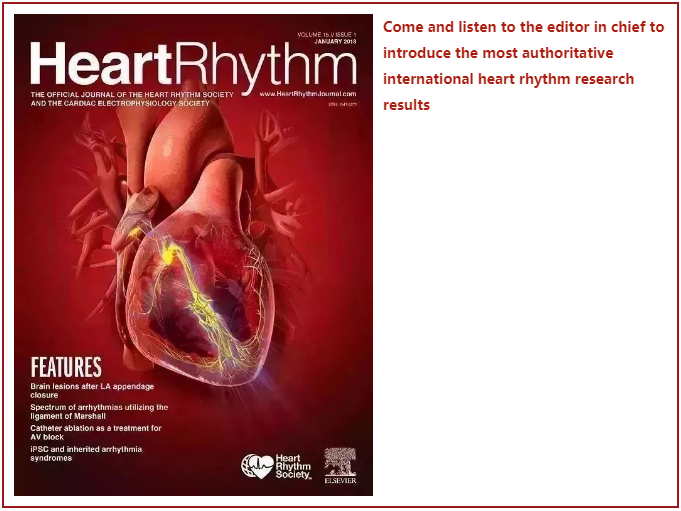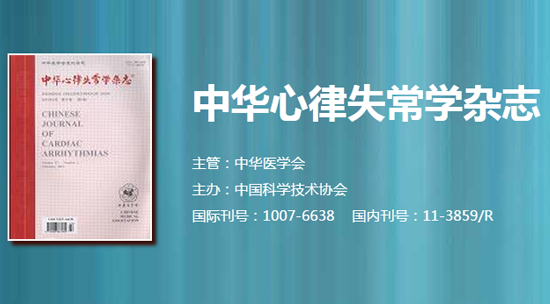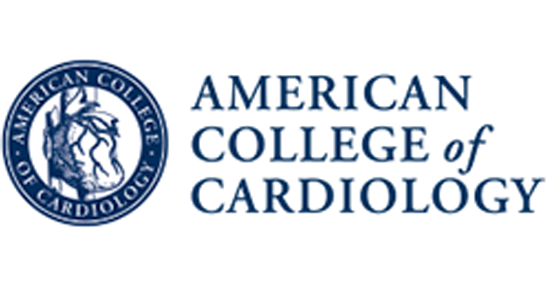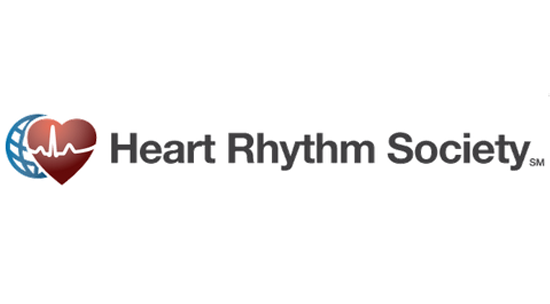HeartRhythm主编—陈鹏生教授语音速递(一月刊 英文版)


Peng-Sheng Chen
Hello, this is Dr. Peng-Sheng Chen, the Editor-in-Chief of Heart Rhythm.
The first article in January 2023 issue is titled “Clinical benefits of concomitant surgical ablation for atrial fibrillation in patients undergoing mitral valve surgery”. The study was done using the national health claims database of South Korea. Among 9501 subjects, the maze procedure was performed in 5508 (58.0%). The risk of the composite event was significantly lower in the maze group with hazard ratio 0.799 as compared with the nonmaze group. In subgroup analyses of the composite events, these benefits were consistent among different groups. The authors conclude that the addition of the maze procedure during mitral valve surgery provided protective effects in the composite outcome of interest.
The next article is “Gaps after linear ablation of persistent atrial fibrillation (Marshall-PLAN): clinical implication”. The authors followed 291 consecutive patients who underwent (1) vein of Marshall ethanol infusion, (2) PV isolation, and (3) mitral, cavotricuspid, and dome isthmus transection. Twelve-month sinus rhythm maintenance was 70% after 1 procedure and 94% after 1 or 2 procedures. Event-free survival after the first procedure was lower in the case of residual gaps within the lesion set. Between the first leg and the second leg, a significant decrease was found in roof lines considered blocked during the first procedure and in delayed dome gaps observed during a second procedure. The authors conclude that gaps are arrhythmogenic and can be reduced by optimized ablation and assessment of lines of block. Closing these gaps improves sinus rhythm maintenance.
Up next is “Outcomes in patients with electrocardiographic left ventricular dyssynchrony following transcatheter aortic valve replacement”. A total of 362 patients were analyzed (mean age 77 years). LV dyssynchrony group (n = 91 [25.1%]) included 56 permanent LBBB patients, 12 permanent LBBB patients with PPM, and 23 non-LBBB patients with PPM and high-burden RV pacing. After adjusted analysis, LV dyssynchrony had significantly higher all-cause mortality and cardiomyopathy. The authors conclude that among TAVR patients with preserved LVEF and normal AV conduction, the development of postprocedural LV dyssynchrony secondary to high-burden RV pacing or permanent LBBB was associated with a significantly higher risk of death and cardiomyopathy at 1-year follow-up.
That paper is followed by one titled “Impact of Bundle Branch Block Morphology on Outcomes of Patients with Syncope and Bifascicular Block: A SPRITELY (POST 3) Substudy”. There were 41 patients with left BBB (36%), 69 patients with right bundle branch block (RBBB) and left anterior fascicular block (60%), and 5 patients with RBBB and left posterior fascicular block (4%). Pacemaker implant compared with ILR was associated with a significant reduction of major study-related events (MSREs) in both patients with LBBB and those with RBBB. The authors conclude that in patients with syncope and bifascicular block, pacemaker implantation reduces adverse events as compared with ILR monitoring, irrespective of the type of BBB or the presence of PR interval prolongation.
The next paper is “Differences in Mode of Death between Men and Women Receiving Implantable Cardioverter Defibrillators or Cardiac Resynchronization Therapy in the MADIT Trials”. A total of 295 men and 66 women died (9.7% vs 6.6%; P =.003) during 26 months. The most common cause of death was nonarrhythmic cardiac death in men (n = 121 [41%]) and noncardiac death in women (n = 22 [33%]). All-cause mortality and cardiac deaths were 1.5- to 2.0-fold higher in men vs women with ICM but similar for those with NICM after adjustment for covariates. ICD efficacy was similar in men and women, resulting in a 50% reduction in all-cause mortality. CRT-D was more effective at reducing all-cause and cardiac death in women than men. The authors conclude that mode of death differs between sex and is dependent on the underlying cardiac substrate. Compared to women, cardiac death is higher in men with ICM but similar in those with NICM. ICDs are equally effective at reducing mortality in both men and women. However, CRT-D may be more effective at reducing mortality in women.
Up next is “Ambulatory AV synchronous pacing over time using a leadless ventricular pacemaker: Primary results from the AccelAV study”. Objective: The purpose of this study was to determine the performance of a leadless ventricular pacemaker with accelerometer-based algorithms that provide AV synchronous pacing. A total of 152 patients from 20 centers were enrolled and implanted with a leadless pacemaker. Among patients with normal sinus function and complete AVB (n = 54), mean resting AVS was 85.4% at 1 month, and ambulatory atrioventricular synchrony (AVS) was 74.8%. Quality of life as measured by the EQ-5D-3L improved significantly from preimplant to 3 months. The authors conclude that accelerometer-based mechanical atrial sensing provided by a leadless pacemaker implanted in the right ventricle significantly improves the quality of life in a select cohort of patients with AV block and normal sinus function. AVS remained stable through 3 months, and there were no system upgrades to dual-chamber pacemakers.
The following article is “Left bundle area pacing: guiding implant depth by ring measurements”. A total of 73 patients were studied. Ring impedance increased stepwise during successful attempts as opposed to unsuccessful attempts. A wider lead-septal angle at implant position correlated with higher ring impedance, whereas no association was found with tip impedance. Unipolar ring threshold correlated with depth of lead implant. Tip impedance measurements at the implant position were less predictive of lead depth and did not correlate with septal thickness. The authors conclude that the ring pacing parameters are more predictive of lead progress than tip measurements. The lead depth and lead-septal angle can be determined from ring impedance measurements. These measurements may provide a determination of lead depth and could obviate the need for contrast injection.
The next one is “Causes of sudden cardiac death according to age and sex among persons aged 1-49 years”. The study population consisted of all persons in Denmark aged 1-35 years in 2000-2009 and 36-49 years in 2007-2009, which equals 27.1 million person-years.In the 10-year study period, there were 14,294 deaths, of which 1362 (10%) were classified as SCD. Potentially inherited cardiac disease accounted for a high proportion (43%-78%) of autopsied SCD in all age groups. A significant proportion (19%-54%) of SCD was caused by sudden arrhythmic death syndrome in all age groups. The authors conclude that the proportion of SCD cases that were identified with a potentially inherited cardiac disease postmortem was high in all studied age groups. The diagnoses of inherited heart disease are likely missed in some SCD cases, along with the opportunity for treatment and prevention in surviving relatives.
The next article is “Improving guideline-based anticoagulation in atrial fibrillation: A systematic literature review of prospective trials”. After a review of 1474 studies, 20 trials were included in this systematic literature review. Forty-five percent were effective in decreasing the AF anticoagulation gap. Interventions focused on patient education, provider education, and electronic risk assessment or decision support increased absolute appropriate anticoagulation prescribing by 8.3%, 4.9%, and 2.0%, respectively. The authors conclude that interventions aimed at improving anticoagulation prescribing patterns in AF can be effective, although there is heterogeneity in outcomes across intervention types. The most effective interventions appeared to target patient education, provider education, and electronic risk assessment or decision support.
Up next is “Increased vulnerability to atrial and ventricular arrhythmias caused by different types of inhaled tobacco or marijuana products”. Rats were exposed to smokefrom tobacco, marijuana, or cannabinoid-depleted marijuana, or to clean air for 8 weeks. The results show that the rats exposed to tobacco or marijuana products exhibited progressively increased systolic blood pressure, decreased cardiac systolic function with chamber dilation, and reduced overall heart rate variability relative to the clean air negative control group. Atrial fibrillation and ventricular tachycardia testing revealed a significantly higher susceptibility to each. Histological analysis indicated that exposure to smoke or aerosol from tobacco or marijuana products caused severe fibrosis with decreased microvessel density and a higher level of sympathetic nerve innervation. These pathophysiological results indicate that tobacco and marijuana products can induce arrhythmogenic substrates involved in cardiac electrical, structural, and neural remodeling, facilitating the development of arrhythmias.
The next one is “Disrupted Cav1.2 Selectivity Causes Overlapping Long QT and Brugada Syndrome Phenotypes in CACNA1C-E1115K iPS Cell Model”. The authors generated iPSCs from a patient carrying heterozygous CACNA1C-E1115K with overlapping phenotypes of long QT syndrome, Brugada syndrome, and mild cardiac dysfunction. Patch-clamp analysis revealed that these cardiomyocytes exhibited reduced peak Ca2+ current density and impaired Ca2+ selectivity with increased permeability to monovalent cations. Consequently, these myocytes showed decreased action potential plateau amplitude, longer action potential duration (APD), and a higher frequency of early afterdepolarization compared with controls. Late Na+ channel current inhibitors shortened APDs specifically in these cardiomyocytes. The authors conclude that these iPSC-based analysis in CACNA1C-E1115K with disrupted CaV1.2 selectivity demonstrated that the aberrant currents through the mutant channels carried by monovalent cations resulted in specific action potential changes, which increased endogenous INaL, thereby synergistically contributing to the arrhythmogenic phenotype.
These original articles are followed by 3 contemporary reviews. The first one is “Neuromodulation Therapy for Atrial Fibrillation”. The authors reviewed the innovative therapies targeting the neurocardiac axis including catheter ablation or pharmacologic suppression of ganglionated plexi, renal sympathetic denervation, low-level vagal stimulation, and stellate ganglion blockade. A second contemporary review is “Characterization of ventricular arrhythmias and sudden cardiac death in subjects with mitral valve prolapse and mitral annular disjunction”. In this review, the authors summarized the relevant literature regarding the epidemiology, diagnosis, pathophysiology, and management of mitral valve prolapse and mitral annular disjunction and elucidated their role in sudden cardiac death. A third review article is titled “Three-Dimensional Functional Anatomy of Human Sinoatrial node for Epicardial and Endocardial Mapping and Ablation”. The aim of this review is to provide a state-of-the-art overview of the 3D structure and function of the human SAN complex, mechanisms of SAN arrhythmias and available approaches for electrophysiological mapping, 3D structural imaging, pharmacologic interventions, and ablation to improve diagnosis and mechanistic treatment of SAN and atrial arrhythmias. These reviews are followed by a Creative Concept paper titled “Outcomes of a PAINESD score-guided multidisciplinary management approach for patients with ventricular tachycardia storm and advanced heart failure: a pilot study”. The authors have developed and implemented a multidisciplinary management pathway for patients with advanced HF and VT-ES with high PAINESD scores (>17), which involves collaboration between cardiac electrophysiologists, advanced HF specialists, and cardiothoracic surgeons, and evaluated this approach in the context of a pilot study.
The journal also published 4 Research Letters. The first one is (1) “Adverse Events Associated with the Bridge Occlusion Balloon for Lead Extraction: A MAUDE database study”. The authors found that significant adverse events have been reported related to the use of the Bridge Occlusion Balloon, including inability to advance over the wire, compromised balloon integrity and thrombosis. The second letter is “Time to positivity of diagnostic provocative pharmacological testing in Brugada syndrome”. The authors conclude that time to positivity of the diagnostic pharmacological challenge in BrS patients is a new and easily obtainable clinical parameter, which predicts, in case of a short time to positivity, subsequent spontaneous type 1 ECG documentation. (3)“Using a Smartwatch for Detection of Loss of Left Ventricular Capture in Patients with Cardiac Resynchronization Therapy”. The authors found that loss of LV-capture can be detected with a high sensitivity and specificity by obtaining two single lead ECGs using a smartwatch. (4) “Dose-dependent cardiac effects of collateral cardiac irradiation: echocardiographic strain analysis in patients treated for extra-cardiac malignancies”. The authors found that fractionated collateral cardiac irradiation correlates with early functional myocardial changes detected by echocardiography.
I hope you enjoyed this podcast. For Heart Rhythm, I’m the Editor-In-Chief, Dr. Peng-Sheng Chen.











